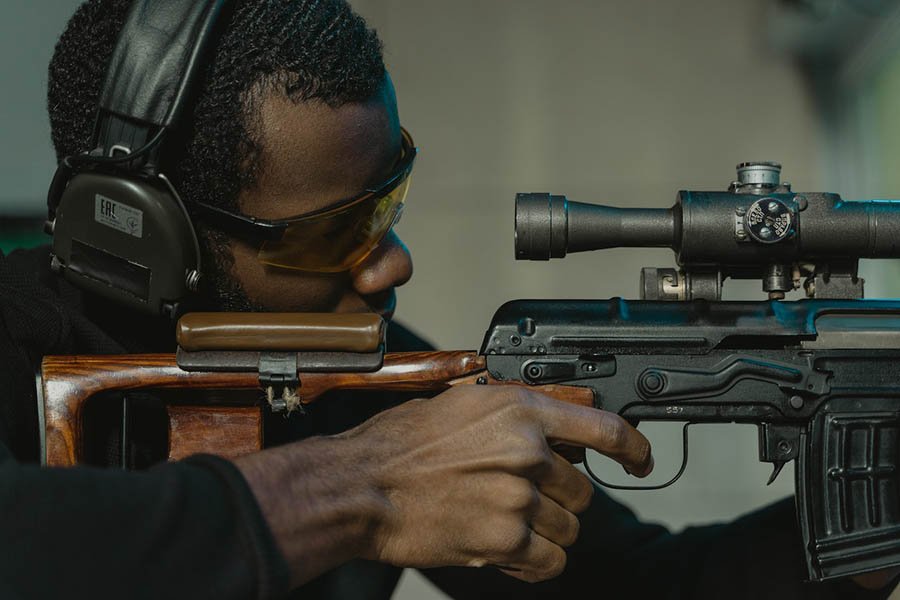For avid hunters, a thermal scope attachment can make a huge difference between success and failure in the field. Not only can thermal vision help you detect heat signatures to easily spot your targets, but it also allows you to track their movements more accurately and quickly.
But if you are just starting out, choosing a riflescope of this calibre can be challenging, considering that it has more intricate features than the regular riflescope. Not to mention the endless number of options out there!
If you’re ready to take your hunting game up a notch, let us help you make the right choice with this guide.
Table of Contents
10 Essential Parameters When Choosing the Best Thermal Scope Attachment for Yourself
Like buying any other rifle accessory, there are certain parameters you must look into when buying the best thermal scope attachment for your needs.
1. Noise Equivalent Temperature Difference (NETD)
The NETD is the thermal scope’s sensitivity to thermal changes. The lower the NETD, the more sensitive it will be and, thus, easier to detect objects from afar.
To understand the NETD value of a riflescope, simply refer to the manufacturer’s NETD rating. For beginners, a rating of 0.1°C or lower is recommended for optimal thermal vision. On the other hand, thermal sensors with higher ratings, such as 0.2°C or more, are suitable for professional thermal imaging applications.
2. Resolution
Different riflescopes have different pixel thermal resolution sizes. Generally speaking, the higher the thermal resolution size, the more detailed and crisp images you will get.
For most amateur hunting purposes, thermal sensors with around 320×240 thermal resolution pixels are good enough to detect and identify objects easily. Higher resolutions, such as 640×480, are usually meant for professional or military applications.
3. Refresh Rate
To ensure quality imaging, you need to pay attention to the thermal scope’s refresh rate, which affects how smooth and detailed the images you will get.
The standard thermal scope refresh rate is 30Hz, which should already be more than enough for most thermal imaging applications. However, if you require thermal vision scope for faster-moving objects, then opt for attachments with higher refresh rates, like 50Hz or 60Hz.
4. Image Quality
For starters, you should look out for a thermal scope attachment with a high-quality digital display, as it ensures better viewing angles and more detailed images. Additionally, scopes with variable digital zoom capabilities will come in handy if you find yourself needing to examine objects from far away.

5. Noise Reduction
This determines the thermal scope’s ability to detect images accurately in noisy environments. Look for scopes with built-in noise reduction algorithms, as these will help eliminate ambient thermal temperature fluctuations.
It is also good to have a thermal clip-on scope attachment that allows you to set the noise thresholds for thermal imaging in specific conditions. This way, you can get quality images without compromising accuracy.
6. Magnification Level
Most thermal scopes on the market come with a fixed level of magnification, usually around 4 to 10 times.
For thermal imaging purposes, look for thermal scope attachments that offer higher magnification levels, as this will help you see objects from further away and make more accurate shots. This is also important if you are hunting dangerous games at night, where you do not have to get close to the target as possible.
7. Reticle Type
You should also consider the thermal scope’s reticle, as certain thermal scopes come with adjustable reticles for greater accuracy in aiming and shooting.
For instance, thermal scopes equipped with a standard reticle are ideal for basic hunting applications, whereas more advanced thermal scopes, such as the Pulsar thermal scope attachment, may come with a variable reticle that can be adjusted for greater accuracy.
8. Field of View (FOV)
The scope’s FOV determines the amount of thermal image you can see in the display. The wider the FOV, the better it will be for long-range thermal imaging applications.
Ideally, you should look for thermal scopes with an FOV of at least 28 degrees to ensure that you get a good view when hunting. If you are looking for more advanced thermal imaging capabilities, then opt for thermal scopes with an even larger FOV.
9. Endurability Against Recoil
The thermal scope that you buy should be able to handle the recoil of your firearm. Otherwise, you could end up damaging the scope and have to buy a new one.
For example, if you have an assault rifle, then a thermal scope attachment for AR15 rifles is ideal. If you have a bolt action rifle, then an attachment for large calibre rifles is more suitable.
Regardless of the firearm you have, be sure to check the scope’s overall construction and durability, as well as any additional features that offer protection against forceful vibrations.
10. Battery Life
You could be hunting for hours, so it’s important to get thermal scope attachments with decent battery life. Generally speaking, thermal riflescopes have anywhere between 10-20 hours of battery life. This is more than enough for most hunting trips.
The good news is that these scopes usually come with a built-in charging port, so you can recharge your thermal scope on the go and avoid having to bring extra batteries.
Other Factors to Consider
Apart from the parameters listed above, there are also other factors to consider when buying a thermal riflescope.
Normally, you should choose a reliable brand, such as Pulsar, Burris, and HikMicro, as this will ensure that you get a quality riflescope with a long lifespan. You should also think about how easy it is to mount and set the scope. In this regard, you could opt for a clip-on thermal scope, which is much easier to install compared to other thermal scope models.
Of course, you should find scopes that are within your budget. Lucky for you, there are night vision scope attachment cheap options that still offer excellent thermal imaging capabilities.
Wrapping Up
Choosing the right thermal scope attachment for your needs should not be difficult. As long as you keep the key parameters in mind, you should have no problem finding one that is perfect for your needs.
For more hunting tips and information, feel free to check our other posts!





